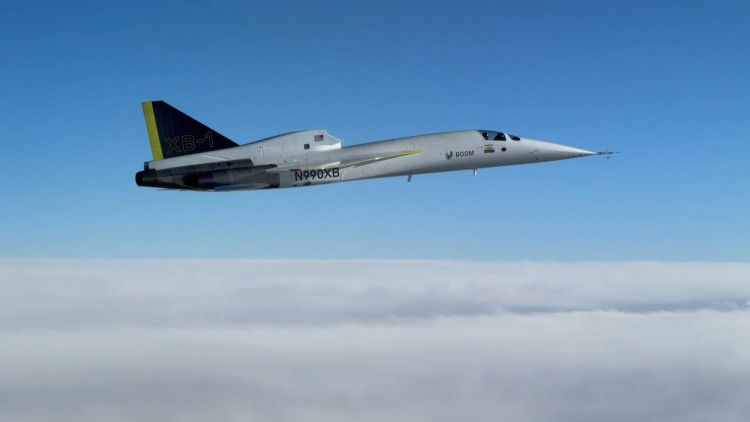Boom Supersonic's XB-1 jet has officially broken the sound barrier during a historic test flight over the Mojave Desert. The flight, which occurred on January 28, marks the first time a civilian aircraft has reached supersonic speeds during a test flight in the United States. The XB-1 jet reached Mach 1.122-equivalent to about 750 miles per hour-after taking off from Mojave Air and Space Port in California, a location famously tied to aviation history.
The pilot of the XB-1, Tristan "Geppetto" Brandenburg, achieved this milestone at an altitude of 35,290 feet, during what was the jet's 12th test flight. The XB-1, affectionately nicknamed "Baby Boom," is a crucial technology demonstrator for Boom Supersonic, a company that aims to bring supersonic passenger travel back to the skies. The company described the event as the culmination of years of research and development and a step toward making commercial supersonic flight a reality again.
"This is such a huge step, building the first civil supersonic jet, you know, right here in America," said Boom advisor and former Chief Engineer Greg Krauland, speaking during the company's livestream of the event. The historic flight was closely monitored by a team of experts and was filmed in real-time using SpaceX's Starlink satellite broadband, which allowed for unprecedented live streaming from the chase planes.
The XB-1's supersonic achievement was not a one-time occurrence. The plane exceeded Mach 1 on three separate occasions during the flight to test its handling and performance at high speeds. The aircraft's performance was tested in real-world conditions, demonstrating its stability and control even as it surpassed the speed of sound. These tests are critical as Boom Supersonic works to refine its technology in preparation for the Overture-a commercial supersonic airliner designed to carry between 64 and 80 passengers at speeds up to Mach 1.7, or approximately 1,295 miles per hour.
The test flight of the XB-1 is the latest chapter in a legacy of supersonic aviation that traces back to the famous Concorde, which retired in 2003 after decades of service. Boom's Overture is poised to be the first supersonic passenger jet to re-enter commercial service, potentially revolutionizing air travel by dramatically cutting flight times. For instance, a flight from New York to London could take just over three hours, half the time of today's subsonic jets.
The XB-1 is a key component in Boom Supersonic's vision for the future of air travel. The jet's development has focused on incorporating advanced technologies that will serve as the foundation for Overture, the company's planned supersonic airliner. The Overture will be powered by Boom Supersonic's bespoke propulsion system, Symphony, designed to run on "up to 100% sustainable aviation fuel."
Boom has already secured over 130 pre-orders for the Overture from major airlines such as American Airlines, United Airlines, and Japan Airlines. The company also recently completed the construction of a "superfactory" in North Carolina, with plans to eventually produce 66 Overture jets per year. With these developments, Boom Supersonic is positioning itself to play a pivotal role in the revival of supersonic air travel, bringing faster flight times to a broader market.






